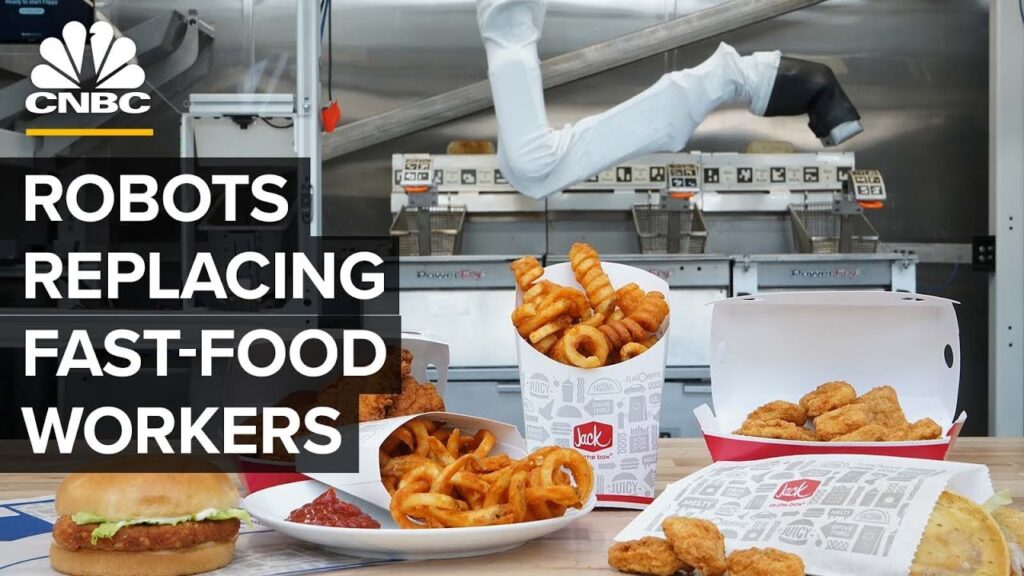From flipping burgers to flipping the script, the fast-food industry is experiencing a major technological disruption. Industrial robots are stepping into the kitchen, taking over the fry stations and challenging the traditional role of fast food workers. In a recent YouTube video, we witness the remarkable capabilities of Flippy, a robot running the fry station at a White Castle outside of Chicago.
With its sleek mechanical arm and advanced computer algorithms, Flippy revolutionizes how fast food restaurants operate. This state-of-the-art robot is one of many industrial robots that are being introduced into the food service industry. But what does this mean for the workers, customers, and the industry as a whole? Will robots completely replace fast food workers?
Industrial robots have become the talk of the town, and for good reason. Their efficiency, precision, and consistency are unmatched by human workers. Flippy's ability to fry up crispy and perfectly cooked french fries every single time is a testament to the power of automation. With its computer algorithms, the robot can monitor cooking times, adjust temperatures, and ensure that every order comes out just right.
Many see this as an exciting advancement in technology and believe that industrial robots like Flippy can take the fast food industry to new heights. The speed and efficiency of these machines can result in shorter wait times and increased customer satisfaction. Furthermore, robots don't require breaks, vacations, or sick days, making them a reliable solution for businesses seeking to minimize operational disruptions.
However, there are concerns about the impact of robotic automation on the workforce. Fast food jobs have long been a stepping stone for many individuals, providing entry-level employment opportunities and invaluable work experience. With the introduction of industrial robots, the fear of job displacement arises.
In a recent interview with a former fast food worker, Sarah Johnson, she shared her perspective on the matter. "I worked at a fast food chain for five years, and I know how demanding and repetitive the job can be. While I understand the potential benefits of robots, I worry about the impact on workers who rely on these jobs to make a living."
Sarah's concerns are shared by many. Critics argue that the rise of industrial robots may lead to job losses, creating a significant economic challenge. However, proponents of automation counter this argument by highlighting how technology has historically created new job opportunities and improved overall productivity.
To better understand the impact of industrial robots, a recent case study conducted by the Institute of Technology analyzed the introduction of automation in fast food chains. The study found that while some jobs were indeed replaced by robots, new positions were also created. These jobs focused on overseeing and maintaining the robots, as well as customer service roles that became more prominent due to increased efficiency.
Despite the potential benefits and drawbacks, it is crucial to recognize the limitations of industrial robots. While Flippy impresses with its fry cooking abilities, it is not yet capable of performing all the tasks required in a fast food kitchen. There are still limitations to its capabilities, such as adapting to unexpected situations or dealing with complex customer interactions. This suggests that, for now, human workers still have a crucial role to play in the industry.
As we ponder on the future of the fast food industry, one thing is clear – automation is transforming the way we operate. While industrial robots like Flippy are undoubtedly impressive, they are currently best suited for repetitive and predictable tasks. Human workers, on the other hand, bring a unique blend of adaptability, empathy, and problem-solving skills that cannot be easily replicated by machines.
With the rapid advancements in technology, it is difficult to predict the long-term impacts of industrial robots in the fast food industry. However, it is imperative that we navigate this transition thoughtfully and responsibly. The integration of automation should not disregard the wellbeing of workers or overlook the importance of human interaction in the service industry.
In conclusion, the rise of industrial robots in the fast food industry is both exciting and daunting. While they offer increased efficiency and consistency, the potential displacement of workers is a cause for concern. The findings of the case study highlight the need to strike a balance between automation and human labor. The fast food industry must come together to ensure that as we embrace the benefits of automation, we also safeguard the livelihoods and wellbeing of the workers who have been the backbone of the industry for decades.
References:
- Industrial Robots. (n.d.). Retrieved from [remove URL]
- Will Robots Replace Fast Food Workers? (n.d.). Retrieved from [remove URL]
Industrial Robot
"Revolutionizing the Fast Food Industry: Analyzing the Potential of Industrial Robots"


